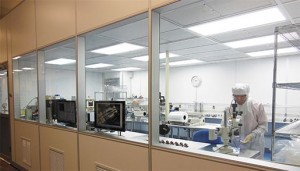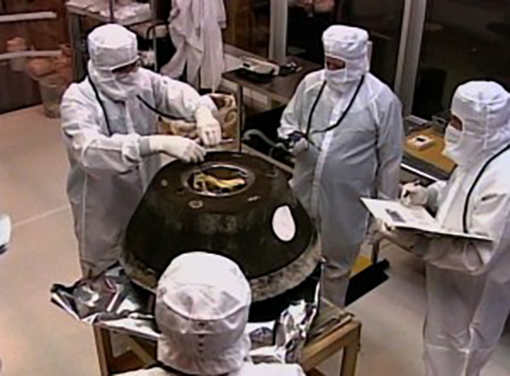Training
Introduction to Cleanrooms and Compliance
Do you think your employees have a hard time keeping their phones and other devices out of FOD sensitive areas? In some industries, you can’t even wear Chapstick on your lips. Welcome to the cleanroom environment.
Cleanrooms were originally developed in 1961 by Sandia Laboratories and based upon innovations in World War Two-era factory designs. A cleanroom, also spelled “clean room”, is a sealed and controlled environment that minimizes airborne and surface contaminants.
Suggested Resources
Check out our articles on What is FOD? or How to Set Up a FOD Program for more information.
Semiconductor and other micro electronics manufacturers can build ever-smaller and more efficient devices. Pharmacy companies and biomedical device builders can manufacture sanitary medicines and hospital machines. Researchers can study nano technology and develop microscopic designs.
Many of these pollutants are too small for the human eye to see, especially in small quantities. Examples include dust, microbes, skin flakes, droplets, vapors, and aerosol particles. Even the thin film of detritus that contaminates visually clean surfaces can destroy a production line.
Small contaminants originate from many sources. Humans shed all manner of particles, such as hair, skin flakes and debris from cosmetics. Small chips and dust break off of parts and tools, plus their coatings emit vapors.
Cleaning solvents emit vapors, and water can grow bacteria. A room itself produces paint flakes, air conditioning debris, and even its own air pollution.
Furniture and Filters
Cleanroom environments, such as this one at Valcor Engineering, are carefully designed. Tables and other furniture should be constructed from (or covered with) stainless steel, Formica or other sterile materials.
Sometimes a table will be perforated with holes to help the room’s air to recirculate more efficiently. Clean room tools are likewise vetted for being suitable. Pencils can leave graphite residue, so only pens are allowed, which must be one-piece with no removable buttons.


HEPA (High Efficiency Particulate Air) and ULPA (Ultra-Low Penetration Air) filters remove air particles smaller than one micron in diameter. Additional filters remove particles from liquids and gasses, plus temperature and humidity are also kept under tight control. The air circulation is regulated not only by fans and other devices, but also by the room’s architecture design.
Air locks, filters, and sometimes air showers are employed to strip contaminants from individuals and objects before entering the cleanroom environment. Personnel wear special clothing, hair nets, gloves, goggles and even face shields.
Much like a FOD-critical area, they may bring only limited personal items with them. Makeup and perfume may be forbidden, due to the potential for detritus and out-gassing.
All beakers, notebooks, and other working items carried into the cleanroom must be identified and tracked. To prevent unwanted air turbulence, they are discouraged from making abrupt body movements. Engaging in “horseplay” is specifically forbidden.
Cleanroom Compliance
In order to be credible, certain industry cleanroom standards need to be met. In the USA and much of the world, the original document was FED-STD-209E. In 2001, 209E was canceled in favor of the more comprehensive ISO 14644-1, although 209E remains popular with many organizations. In Europe, GMP Annex 1 is the governing document.
But all of this works only if management commits to keeping the cleanroom clean. In 2012, severe negligence at the New England Compounding Center led to the deaths of at least 48 people. They were among the 14,000 patients nationwide who had been injected with medicines infected with meningitis.
Government investigators visiting the cleanroom discovered mold growing inside of vials. They also learned that personnel had shut off the air conditioning every night. The company ended up declaring bankruptcy and federal agents arrested one of its pharmacists as he tried to flee the country.
Don’t worry too much about FOD control requirements – you’re already breathing in countless tiny particles without even thinking about it.
In the United States, you can also acquire the ISO-14644 series at IEST (Institute of Environmental Sciences and Technology).

